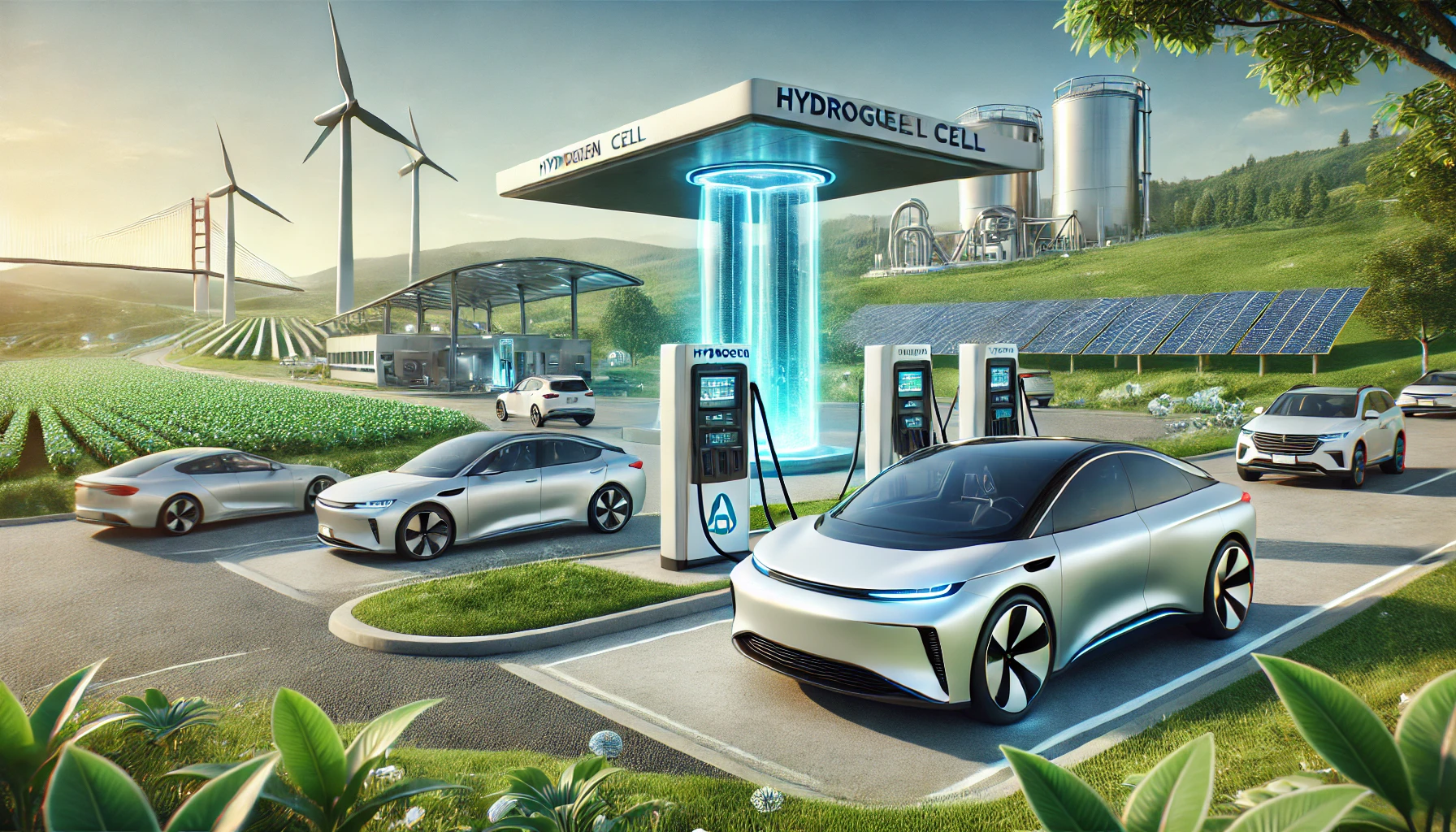In the quest for cleaner and more sustainable energy alternatives, hydrogen fuel cell automobiles (HFCAs) stand out as a compelling choice against the conventional combustion engine vehicles and battery-powered electric vehicles (BEVs). Offering a blend of zero-emission driving, expedient refuel times, and superior energy efficiency, hydrogen fuel cells are gaining attention. This discourse explores the trajectory of hydrogen fuel cell automobiles, focusing on the underlying technology, advantages, obstacles, and the likelihood of them becoming more commonplace.
Comprehending Hydrogen Fuel Cell Mechanics
The Operation of Hydrogen Fuel Cells
Electricity in hydrogen fuel cells is produced via a chemical reaction between hydrogen and oxygen. Here is a basic outline of the operation:
- Storage of Hydrogen: The vehicle houses hydrogen gas (H2) in tanks capable of withstanding high pressure.
- Chemical Reaction: Inside the fuel cell stack, hydrogen atoms are separated into protons and electrons. The protons traverse a membrane, while the electrons circle through an external circuit, generating electric power.
- Electricity Generation: This electric power activates the vehicle’s motor.
- Water Vapor Output: Protons, electrons, and oxygen merge to create water vapor (H2O), which is the sole discharge from HFCAs.
Varieties of Hydrogen Fuel Cells
Although multiple hydrogen fuel cell variants exist, vehicles primarily utilize the Proton Exchange Membrane (PEM) fuel cell. Due to their compact design, high operational efficiency, and quick activation times, PEM fuel cells are well-suited for vehicular use.
Advantages of Hydrogen Fuel Cell Automobiles
Zero Emissions
HFCAs emit merely water vapor, eliminating tailpipe greenhouse gas emissions. This positions them as an eco-friendly substitute to ICE vehicles, making a notable impact on air quality and climate change mitigation.
Rapid Refueling
HFCAs can be refueled in about 3-5 minutes, a timeframe on par with traditional petrol or diesel refueling. This expeditious process aligns well with the refueling habits to which consumers are accustomed.
High Energy Concentration
Hydrogen’s high energy concentration allows it to store more power per weight than batteries, which translates to extended driving ranges for HFCAs and less frequent refueling.
Reduced Weight
The fuel cells and hydrogen storage mechanisms in HFCAs are typically less cumbersome than the large batteries in BEVs, which can lead to improved vehicle efficiency and dynamics, particularly in the context of commercial and heavy-duty transportation.
Hurdles for Hydrogen Fuel Cell Automobiles
Hydrogen Production and Distribution
Production Techniques
Hydrogen, while plentiful, must be isolated and refined for fuel cell usage. The main production techniques include:
- Steam Methane Reforming (SMR): A prevalent method that depends on natural gas and emits CO2.
- Electrolysis: Splits water into hydrogen and oxygen using electricity. It’s eco-friendly when renewable energy is used, albeit currently costly.
Infrastructure Evolution
For HFCAs to thrive, establishing an extensive network of hydrogen stations is essential. This requires significant investments and collaboration between governments, industry players, and other entities. The current scarcity of such infrastructure impairs the practicality and appeal of HFCAs.
Cost Factors
The manufacturing costs of hydrogen fuel cells and the vehicles are still steep. Although anticipated to drop thanks to technological advancements and mass production, present prices pose a barrier to mass acceptance. Additionally, the substantial expense of erecting hydrogen stations compounds the overall cost.
Energy Efficiency
Despite their proficiency in converting hydrogen to electricity, the comprehensive energy efficiency of hydrogen fuel cells, from production to propulsion, lags behind that of BEVs. Energy losses are incurred during hydrogen generation, transport, and conversion within the fuel cell.
The Likelihood of Broad Acceptance
Governmental Policies and Incentives
The promotion of hydrogen fuel cell technology relies heavily on government intervention. Nations worldwide are establishing ambitious hydrogen strategies as a component of their environmental commitments. Grants, tax breaks, and funding for development and infrastructure are crucial for fostering a hydrogen-based economy.
Industry Synergy
Progress in hydrogen fuel cell technology hinges on the cooperation of carmakers, energy firms, and tech innovators. Partnerships and collaborative projects can hasten the maturation of both the vehicles and the necessary infrastructure, reducing costs and enhancing efficiency.
Technological Breakthroughs
Continual research promises to bring about significant improvements in hydrogen production, storage, and fuel cell efficiency. Breakthroughs such as increased-capacity hydrogen storage solutions, more effective fuel cells, and methods to produce hydrogen from renewable sources will bolster the feasibility of HFCAs.
Targeted Market Segments
HFCAs show promise in particular market niches:
- Heavy-Duty and Commercial Transport: The extended range and swift refueling of HFCAs are ideal for trucks, buses, and other commercial vehicles that demand lengthy travel distances and minimal idle times.
- Public Transport Systems: Hydrogen-powered buses and trains can play a role in reducing city emissions and enhancing air quality.
- Specialized Usage: In sectors or regions where BEVs may be impractical due to range, weight, or refueling limitations, HFCAs present a viable solution.
Final Thoughts
Anticipating the progression of hydrogen fuel cell vehicles (HFCVs), one can discern a landscape filled with promise, harboring the capacity to foster a transportation realm that is both sustainable and emissions-conscious. Admittedly, hurdles such as financial feasibility, the establishment of supporting infrastructure, and the optimization of energy use must be surmounted. Nonetheless, technological strides, coupled with conducive legislative frameworks and concerted efforts from key industry players, are carving a path toward their wider acceptance. As the hydrogen economy takes shape, it stands to reason that HFCVs will assume a pivotal role in the multifaceted strategy required to tackle the pressing issues of global transit and ecological preservation.
